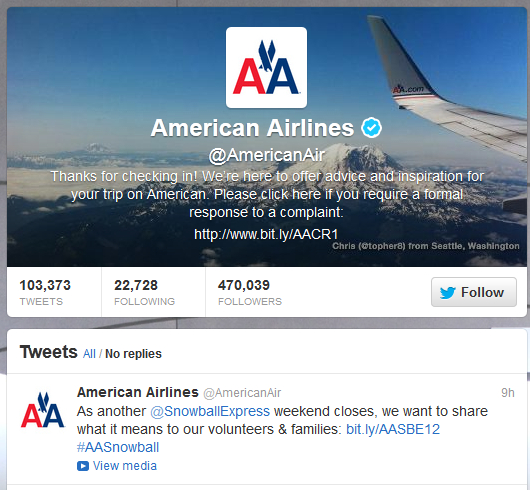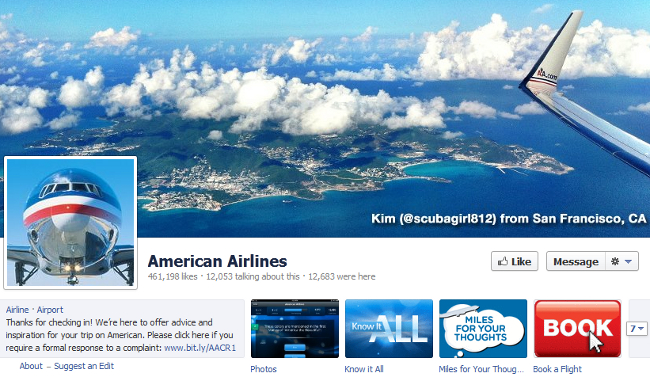The human touch: hiring social staff is a tactical business
Today many of American Airlines’ customers will choose a technology platform like Facebook or Twitter over the telephone to make an enquiry about an upcoming flight or to lodge a post-trip complaint. But the skills required to deal with these social queries are very different. Pamela Whitby reports
Not much keeps Jonathan Pierce, Director, Social Communications at American Airlines awake at night. But one thing that has been playing on his mind a lot of late is how his company tackles the very human side of what is going on in social media.
In particular he is thinking very seriously about how you choose people and then train them for a job that requires a very different skillset to what might be required in a traditional telephone role. “We are taking people out of call centres and putting them into a role where they are the first point of contact for literally any enquiry from the customer. It is a very public role that must be done in writing, and requires a completely different softer side tactical skillset,” explains Pierce. “It’s a huge learning curve for everybody.”
This poses a challenge for an airline which, from Facebook and Twitter, to Instagram and Pinterest, is across just about every social platform that matters to the travel industry. “We have fully embraced social media but today the challenge is two-fold: how do we respond consistently and with scale?”

Training plays a central role in this and today American offers a six-week training programme for a role in social media. First American starts by hiring people as temporary workers to see if they fit the bill. Some of these come from traditional call centre roles but not everybody makes it past the training period. While social media is used by American Airlines for far more than just customer service enquiries, typically Twitter – which accounts for 80% of American’s social traffic - is used for reservations or pre-trip enquiries. Facebook, on the other hand, is mainly used post-trip. Those being trained up on Twitter tend to come from a reservations background, whereas Facebook employees are, in the main, customer services people.

But not everybody can make the transition. The breadth of people who travel is enormous so on a daily basis staff must deal with queries from people who may never have travelled on an airplane before to those who are incredibly savvy frequent fliers. The requests can be anything from strange to unbelievable and even downright demanding. “On social customers can be ruder than they might be on the telephone and staff must be able to respond appropriately,” says Pierce.
Softer skills
So what qualities does Pierce look for when hiring? It is imperative that new recruits are able to:
1. Think on their feet (Tweets are coming in every few seconds and American aims to respond to each within 15 minutes.)
2. Be able to conduct themselves appropriately in a public forum
3. Treat everybody with respect and respond appropriately in the right tone and without spelling mistakes (on Twitter in 140 characters!)
4. Act intuitively. For example knowing when it’s appropriate to use humour and to understand when something is very serious.
Intuition is arguably the most important characteristic because without this, there is a risk of all too often ending up at the centre of a media storm. However, Pierce admits this is something that can be difficult to assess in an interview. “I would be lying if I said that we’d had complete success in always hiring the right people to date,” he says. “Quite often people think that in order to do this job they need technological expertise but what is often forgotten are the softer, tactical skills which are incredibly important.”
What is essential is that people are trained properly to ensure that the brand voice and responses are consistent across all platforms. But training has its limitations and cannot change a person’s personality. “Having an authentic, transparent, professional and savvy tone all rolled up in one is key. It really takes the right person or personality to achieve this in such a fast paced environment,” says Pierce.
Technology moves
While the human touch is incredibly important American is also considering how to ensure the social platforms it is using start to immerse with native and host technologies within the airline. “The tools you can use for social response like Hootsuite and Tweetreach are all very good and great to get started with but as you start to get to scale you need to be able to connect with your customer reservations systems and customer service systems,” says Pierce. “That is the next stage for us and we are trying to figure out how we do it – whether we build the technology or buy it in to get to the next stage of integrating social into the business.”
One thing seems certain social media is very much a part of American’s strategy to deliver what the customer wants. “We aim to develop relationships and create advocates and our representatives work hard to do this every day because providing an exceptional customer experience via social is crucial to our success,” he says. This is accomplished in a number of different ways but it is certainly not an easy job. “It requires balance, being and able to putting ourselves in the customers’ shoes, thinking outside the box while working within company guidelines and getting the tone right, too.”
To hear more insights from Jonathan Pierce, Director, Social Communications at American Airlines join us in San Francisco from March 18-19 for North America’s biggest social media & mobile event.

